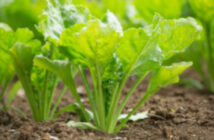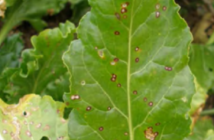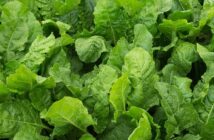A new 20 million Sugar Beet R&D research centre, the ‘SESVanderHave Innovation Centre’ (SVIC) was inaugurated by Willy Borsus, Federal Minister of Agriculture, in the presence of 250 customers and leading scientists from around the world on 6th September in Tienen, Belgium. Barely 400 days from the start of construction, is the new Centre one of the most high-tech research facilities built by the sugar industry, with over 13,000 m2 of glasshouses and 2000 m2 of laboratories.
Central to furthering research and innovation for over 4 million hectares of Sugar Beet grown around the world, it will accelerate the screening of new genetics, allowing a threefold increase in testing and almost doubling the delivery of exciting, new varieties to the market.
“By dramatically scaling up the number of plants we can test, the faster our research can progress and the more qualitative the results. This SVIC is critical to the company and the Sugar industry. It enhances our capabilities, meaning we continue to push the boundaries for yield whilst defending the crop from environmental and biological threats.” Explains Rob Van Tetering, CEO of SESVanderHave.
“Our investment of 20 million in this Centre and ongoing R&D expenditure highlights our commitment and confidence in the Sugar Beet crop and to unlock further yield potential for the future. Existing Collaborative Research Projects with Industry and Institute Partners will benefit immediately from our new capability.”
Gerhard Steinrücken, R&D Director, “Our Sugar Beet seed is grown in more than fifty countries worldwide, all with unique environmental needs, making a tailored genetic solution essential in each of our varieties. The SVIC allows us to analyse all the factors that restrict or enhance performance, whether biotic or abiotic. A significant amount of our 20m investment is for the latest tools to use within the SVIC, including the next generation of biotechnology analytics, innovative investigation methods, bioassays and automation of these. This allows ever greater analysis of sugar beet and it’s DNA.
However the most important tools in plant breeding are our people, their Passion will be aided by providing a new home for various research departments on a single site in the SVIC, furthering cooperation and innovation between them and research partners.”
“The SVIC also delivers on SESVanderHave’s commitment to sustainability. The SVIC catches more than 8 million litres of rainwater per year which is recycled to water our plants. The latest LED lamps are not only 400% more economical than existing lamps but allow us to adapt lighting techniques, whilst our black-out screens reduce light pollution ensuring our glasshouses minimise inconvenience to those working and living around us.”



